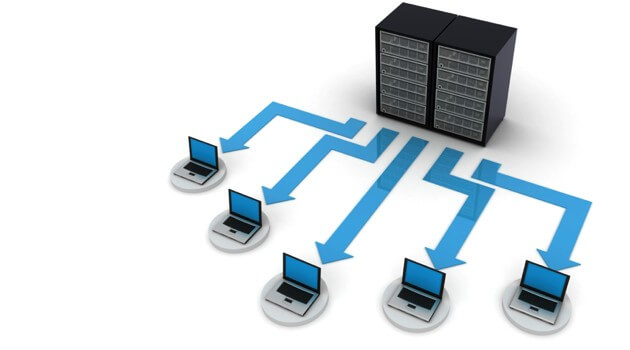Planning Virtual Desktop Infrastructure? Be Careful With These Mistakes
Virtual Desktop Infrastructure (VDI) is a virtualization service, which hosts your user desktop environments (user states) and applications on the remote servers. This enables the IT administrators to deliver consistent, personalized and secure desktop environments to users while enabling them to access their desktop environments regardless of their location. Most broadly, it is as if taking a user’s desktop – including applications, data, profile, everything – and putting it on a server, and telling the user that he can reach it from any device that supports VDI standards. For a detailed look, you can check Yung Chou’s excellent post on TechNet blogs.
VDI offers tangible returns in the medium to long run if planned and executed correctly. Having worked for 8+ years in a VDI environment, both as a user, administrator and consultant, I have seen that there are certain same mistakes repeated over and over in every company. Those mistakes not only lower the return on investment (ROI) but also leads to poor user experience.
The first mistake is planning for VDI for today’s requirements. When you have about 30 users working on the same server, there will be high resource uses. The users will highly consume CPU, memory, disk read/writes (I/Os) and network bandwidth. Make sure that you start small on the VDI implementation, measure before and after resource use, determine average resource use per user and plan accordingly. When measuring resources, do not forget to include various scenarios, from running an Excel macro to visiting a Java/Flash/Silverlight intensive web site, from running multiple applications concurrently to draw reports from ERP applications.
RELATED: Virtualization Traps Companies Should Not Fall
Next, be sure to use existing resources whenever possible. Evaluate your existing servers carefully. They may not be suitable for running a couple of users in a VDI setup but they may as well be powerful as a Remote Application delivery. The same goes with your existing desktops. Your consultant may be telling you to purchase shiny new thin clients but that simply may not be the case. You can simply install a Windows Thin PC, lightweight Linux distribution or any other open source/free application to repurpose your dying PCs as thin clients. You can use your new desktops to run other workloads or use them in branch offices where you don’t have VDI implementation.
When these are in place, make sure that your administrators are well trained. VDI is not simply virtualizing a user’s desktop on the server with an image/restore. VDI is a detailed solution with user profiles (settings that define their wallpaper, resolution, location of the icons on the desktop, application preferences and the line) and/or folder redirection. A good understanding of both these concepts and their implementation scenarios are crucial for the administrators. In addition to these, administrators also need to know about VDI load balancing, VPN and mobile device access and desktop support at the very least. On the other side, the users need to know what to expect. Folder redirection can be a lot of headache if the users are left unsupervised by saving their personal data (music, videos, non-work related images) on the server. They have to be told that non-company data is strictly forbidden. They have to know how and with which credentials they can access their corporate desktops. Training for both the administrators and the users is essential.
RELATED: A Brief History of Data Storage
Administrators also need to know how VDI works with various applications, such as collaboration, financial applications and in-house developed applications, if any. At this point, I recommend setting up a feedback mechanism – SharePoint, Google or a simple wiki – where users can log their experiences – what works and what not, performance and any other problems.
Then comes the importance of the redundancy. You cannot put all your eggs in one basket and let the business halt when there is an outage. There will be an outage and you have to be prepared for it. Make sure that you have pen and paper and you draw your entire VDI implementation. There you will be able to see what you have to do when a particular item fails – a switch, a server, a connection, whatever the name it is. According to my experience, VDI works best with Bladecenter – Storage implementations, where servers are clustered and virtualized. This way, hardware and software outages are eliminated altogether at once. Do not worry if that solution is too expensive for you, you can create clusters with any servers, for any resources with the current operating systems.
Security is another issue to consider. You cannot simply install software on a server and think everything is over. Or do not feel that disabling a user’s access to his desktop with a few clicks is all it takes to lock a user out. The same principles that apply to your data center and your servers also apply to your virtual infrastructure. This is the first point. The second point is to choose, implement and monitor your antimalware application. The third point is the problems that are introduced with the ubiquitous access that comes with the smartphones, tablets atc.. Make sure that you cover these scenarios with your implementation as well.
RELATED: Apple and EMC: What do You See in Common? (Hint: Fate)
Last pitfall is the immediate cost savings. You will not benefit from immediate cost savings. Nor you will have a shiny income statement at the end of the quarter. VDI implementation is a medium to long-term investment. As you phase out desktops with thin clients, you will see lower replacement and maintenance costs, as well as lost time waiting for repair/replacement of the equipment. Next, you will see reduction in administrative efforts; since VDI is managed by a central policy, you will not have desktop support staff running around fixing end-user issues. You will have a predictable, standard, controlled, yet customized and a flexible working environment (Windows 2008 R2 SP1 VDI works very well over a 1 Mbit ADSL connection). You will be able to better utilize your IT staff – developing them and employing in business scenarios. Don’t bet on the immediate savings.
This is not an exhaustive listing of the traps, pitfalls and mistakes you will encounter down your VDI road. As goes with every project, plan, document, make mistakes, learn from them, document the outcomes and carry on. Hopefully, after you succeed in implementing VDI, you will wonder how you were living without it.
Featured Image:




